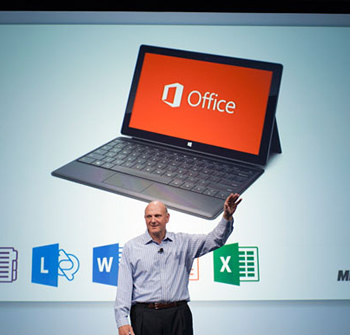Adobe recently announced that it's no longer going to sell stand-alone versions of Creative Suite or its individual components, instead choosing to offer the software as part of cloud subscription packages only. Microsoft started offering something similar with Office 365, but unlike Adobe, the company feels that the transition needs to happen overtime rather than pulling the rug out from retail offerings in one go.
While Office 365 is available as a subscription, Microsoft continues to offer Office 2013 as a separate product on disc or through a download. The company clearly hopes for the subscription model to take off, but it understands that some consumers are not ready for such a business model yet. In a blog post, Microsoft explained its stance:
However, unlike Adobe, we think people's shift from packaged software to subscription services will take time. Within a decade, we think everyone will choose to subscribe because the benefits are undeniable. In the meantime, we are committed to offering choice--premier software sold as a package and powerful services sold as a subscription.
Indeed, the benefits of cloud-based subscriptions are great for the company offering them – piracy becomes harder and it's a steady revenue stream every year. If the price is right you could argue it's a winning proposition for customers as well, with the added benefit of having always up to date software. But of course not everyone is ready to commit or will see the value in an ongoing subscription, thus the decision to offer both options.
Microsoft went on to say that Office 365 has been quite successful, with more than 25-percent of buyers opting to sign up for the subscription. "So, perhaps the shift is happening faster than we originally thought, and Adobe is helping blaze the trail," the company said on its blog.
Only time will tell which stance on cloud services will win out, but based on the initial consumer backlash online, it seems that Microsoft's slow transition might be the smarter approach.
